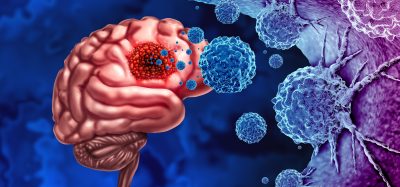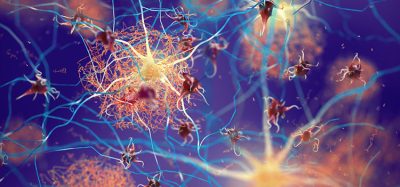A change in genetic code causes lung cancer to develop
Posted: 12 January 2023 | Izzy Wood (Drug Target Review) | No comments yet
Using lung basal cell organoids, researchers identify a gene that directs the development of lung cancer and offers a better understanding of its disease treatment.


A team led by researchers at New York University (NYU) Langone Health’s Perlmutter Cancer Centre, US, have identified a gene that drives development of the second most common type of lung carcinoma, offering greater insight into how the disease might be treated.
There is currently no approved, targeted, first-line therapy for lung squamous carcinoma (LUSC), a cancer that forms in cell layers lining the organ and is responsible for 20 to 30 percent of lung carcinoma deaths.
However, this new study, published in Cancer Cell, found that deleting a gene called KMT2D, caused normal (basal) lung cells grown in complex cultures (organoids) to transform into LUSC cells.
KMT2D regulates the activity of genes that enable the building of protein tyrosine phosphatases, enzymes that restrain the cell-growth-encouraging signals sent through another enzyme set called receptor tyrosine kinases (RTKs).
Two RTKs, EGFR and ERBB2, are known to take part in the abnormal activation of the RTK-RAS signalling pathway, wherein a molecular switch gets “stuck in the on mode,” causing cells to continually multiply as part of cancer.
“Our study identifies KMT2D as a pivotal contributor to the development of lung squamous cancers, and offers vital clues about how to target KMT2D-deficient LUSC,” said co-corresponding author Dr Kwok Kin-Wong, director of the Division of Hematology and Medical Oncology at NYU Langone Health.
“The same genetic changes that cause the gene to contribute to cancer also create tumours that are very sensitive to existing drugs that target a related pathway.”
The study confirmed prior evidence that the KMT2D gene encodes a protein (a histone methyltransferase) that determines the degree to which the tyrosine phosphatase genes can be accessed by the cellular machinery trying to read them.
Given the better understanding of LUSC mechanisms resulting from study, the research team chose to test in mice a combination of two drugs: SHP2 inhibitor SHP099 and pan-ERBB inhibitor afatinib.
ERBB is made more active by KMT2D signalling flaws, and the enzyme SHP turns up the RTK-KAS pathway, much like EGFR and ERBB2, which are rendered more active by the lack of KMT2D. The team reasoned that experimental drugs designed to inhibit SHP might also counter the effect of KMT2D deficiency when used alongside the ERBB inhibitor.
Indeed, they found that the combination slowed lung tumour growth in mice with LUSC that had been engineered to lack KMT2D, as well as in tumours in mice derived from the human LUSC tumours with KMT2D mutations.
“Multiple SHP2 inhibitors are currently testing in clinical trials, and afatinib is already available,” said co-corresponding author Dr Hua Zhang, formerly an instructor in the Department of Medicine at NYU Langone Health.
“Our findings warrant the design of clinical trials that test these therapies in KMT2D-deficient patients with LUSC.”
Related topics
Gene Therapy, Genetic Analysis, Genomics, Immuno-oncology therapeutics, Targets, Therapeutics
Related conditions
lung squamous carcinoma (LUSC)
Related organisations
Division of Hematology and Medical Oncology at NYU Langone Health, New York University (NYU) Langone Health’s Perlmutter Cancer Centre
Related people
Dr Hua Zhang, Dr Kwok Kin-Wong








